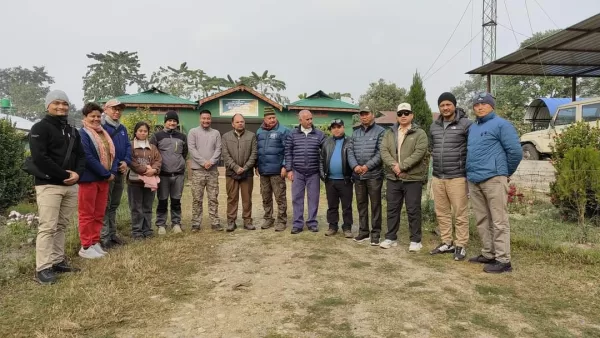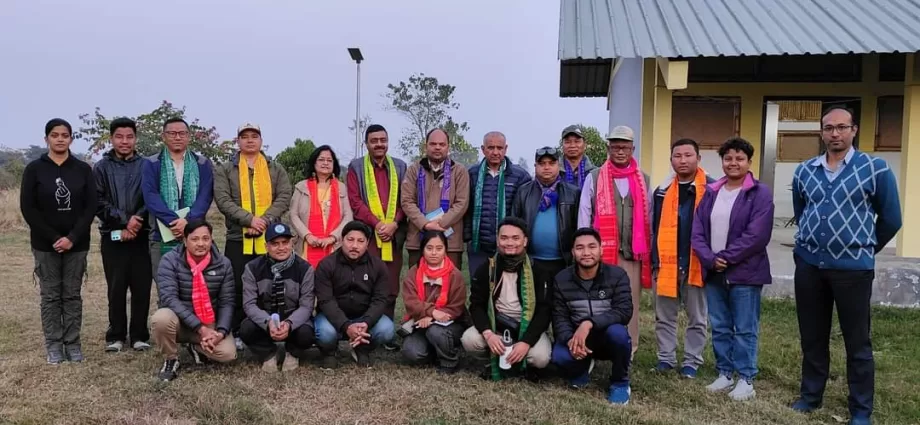Guwahati: An environmentalist team from Nepal visited Kaziranga and Manas recently. The team comprised Protected Area Managers and community leaders. The participants took stock of the best practices related to protected area management (species and habitat), community livelihood generation and human-wildlife conflict mitigation. The team undertook this exposure visit from 4 to 9 February.
They visited Kaziranga on 5 and 6 February and interacted with the senior forest officials of KNPTR. Dr. Sonali Ghosh, Field Director of Kaziranga Tiger Reserve, spoke to them about the protected area of Kaziranga. Two documentaries on KNPTR were screened during the session. They were also briefed about the traditions and customs of the indigenous Karbi people and their connservation efforts. A village walk/ trek was also undertaken and traditional food was served. Handmade items of the forest-dependent communities were also showcased alongside jeep safaris.
The visit to Manas was carried out from 7 to 9 February. The environmentalist team interacted with the senior officials and local NGOs at the Manas Convention and Outreach Centre.
Hiranya Kr. Sarma, retired IFS and ex Field Director of Manas National Park, gave a brief history of his work in conserving Manas National Park. He spoke about the importance of involving local communities, NGOs and other law enforcement agencies in the conservation of protected areas.

Rustam Basumatary, Secretary of Manas Mouzigendri Eco-Tourism Society (MMES) spoke about their effort to influence the local communities towards developing a sense of ownership in conserving the wildlife of Manas National Park. He also spoke about MMES and their effort to support the Forest Department in protecting the park.
OSD to Tourism Department of Bodoland Territorial Council, Dharanidhar Boro spoke about the importance of exposure visits to protected areas. Dr. Ashok Ram, Senior Conservation Officer, Forest Department of Nepal shared his experiences and spoke about community-based conservation and the importance of community forest. The visitors toured the local villages and interacted with the indigenous Bodo people regarding their homestays and SHGs in the region. They also took the safari in the National Park.
The exposure trip for the environmentalists was supported by the Zoological Society of London-Nepal. Aaranyak facilitated their travels, logistics and interactions. Multiple officials from Aaranyak mentioned the various projects undertaken by them in both Manas and Kaziranga.

